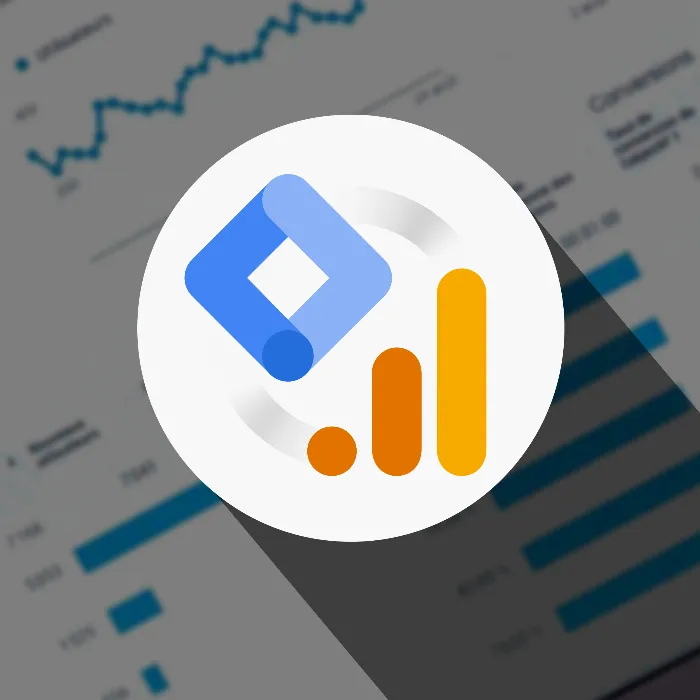You are ready to connect your first website or app with Google Analytics 4 (GA4)? Adding a data stream can have a positive impact on your tracking and provide you with valuable insights into user behavior. In this guide, you will learn how to set up and link a data stream step by step.
Key Insights
- The data stream is the key to your analytics data. It allows you to analyze both web and app data.
- The optimized analysis in GA4 offers advanced tracking features without the Google Tag Manager.
- You can create multiple data streams under a single property.
Step-by-Step Guide to Linking a Data Stream
First, you need to ensure you have created a Google Analytics account. If you are already signed in to your account and in the property view, it's time to set up a new data stream.
Step 1: Open Data Streams
Start by opening the property under which you want to add the data stream. Click on the "Data streams" section.
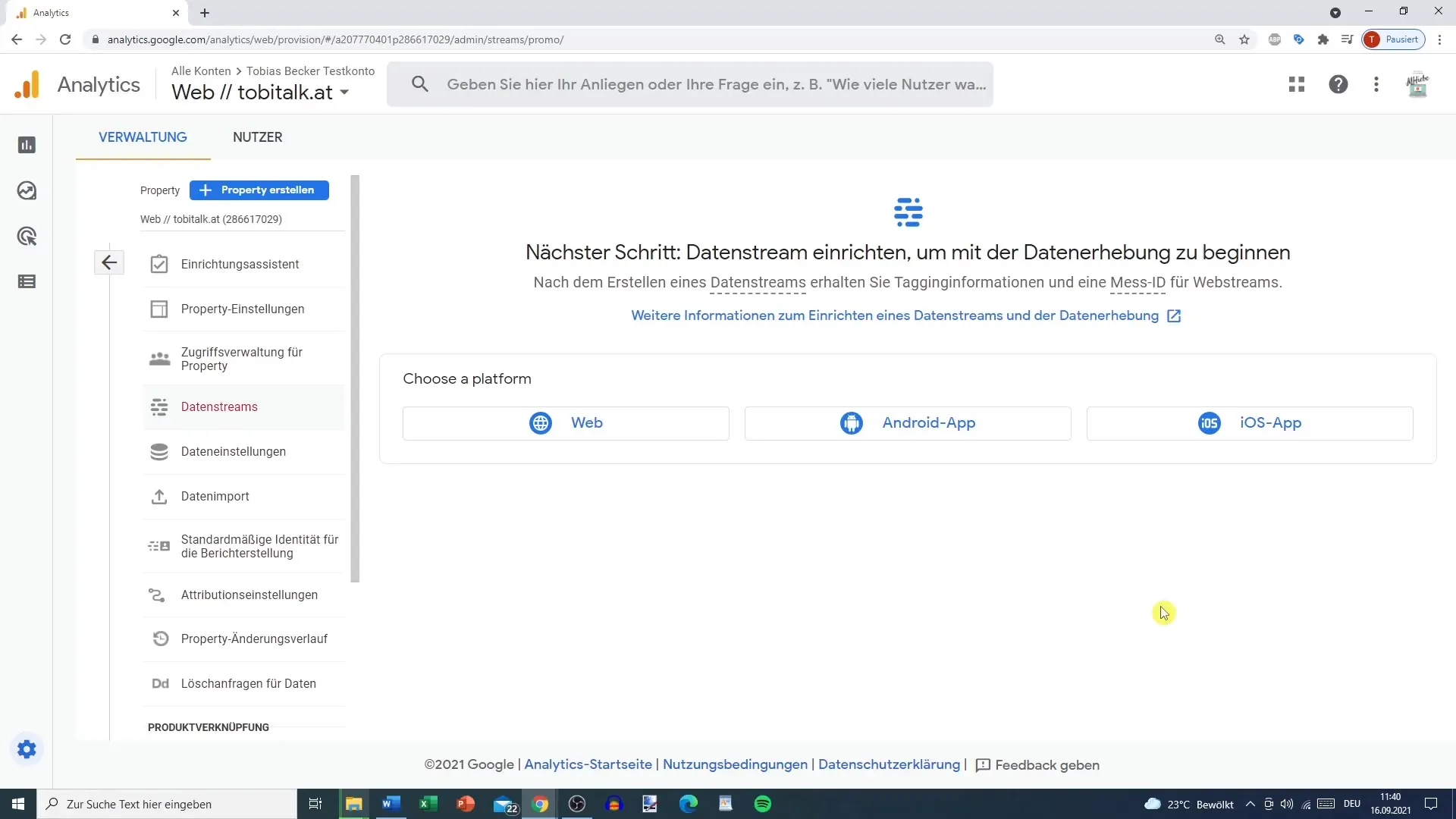
Step 2: Add New Data Stream
After clicking on "Data streams," you will see the option to set up a new data stream. Click on "Create stream" here.
Step 3: Select Data Stream Type
Here, you choose the type of stream you want to create. You can link a website, an iOS app, or an Android app. In our case, you will choose the website.
Step 4: Enter Website URL
Enter the URL of your website. Be sure to select the correct protocol (HTTP or HTTPS) depending on what your website uses.
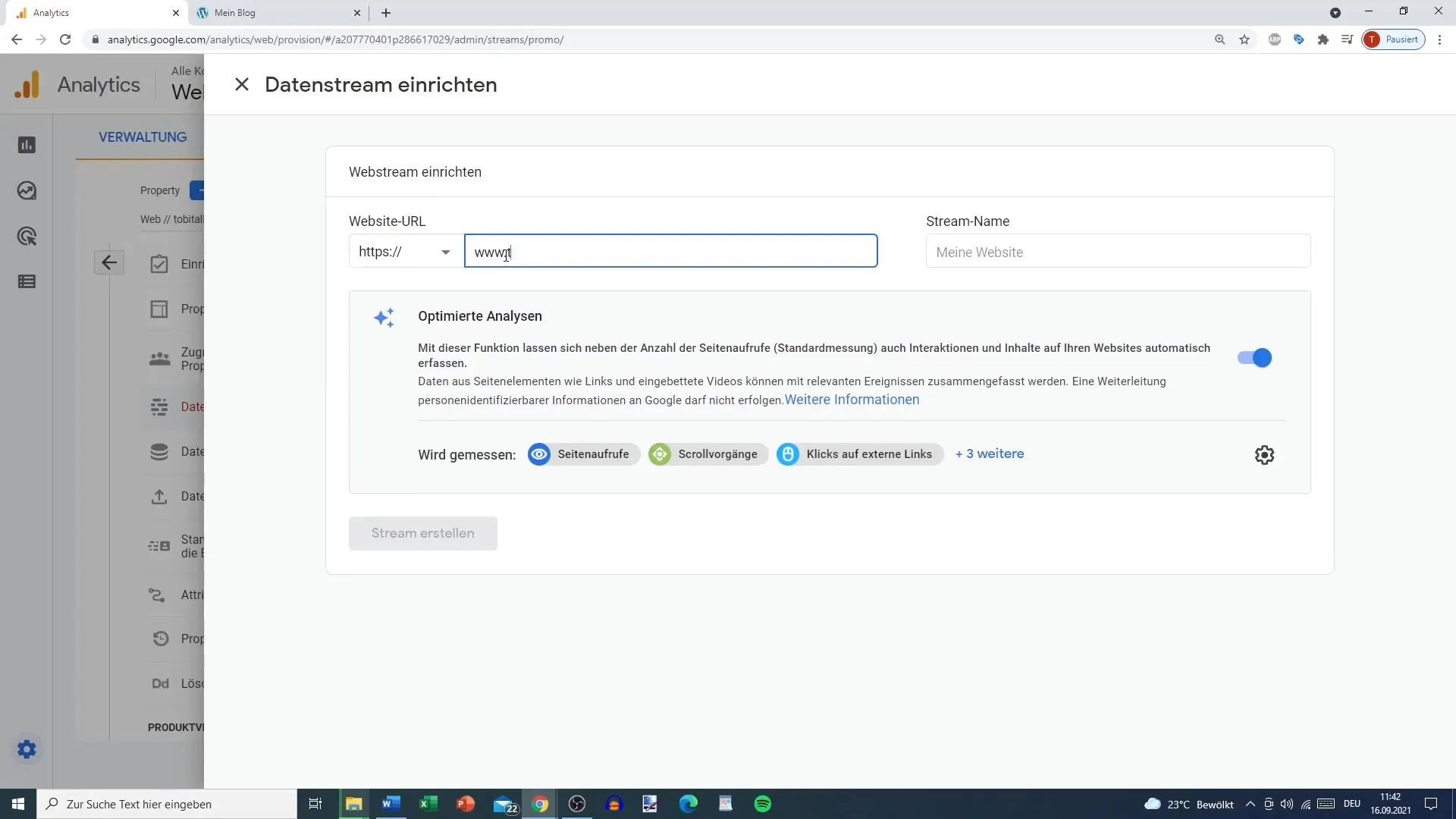
Step 5: Assign Stream Name
Give the stream a name. For example, it could be "Test Website." This way, you can easily identify which stream it is later on.
Step 6: Enable Optimized Analysis
You will now see the option to enable optimized analysis. This feature allows automatic tracking of various interactions on your website without the need for additional tagging tools.
Step 7: Review Stream Details
Review the details of the stream, including the URL, name, and Measurement ID. This Measurement ID is important as it can later be used to link with tools like Google Tag Manager.
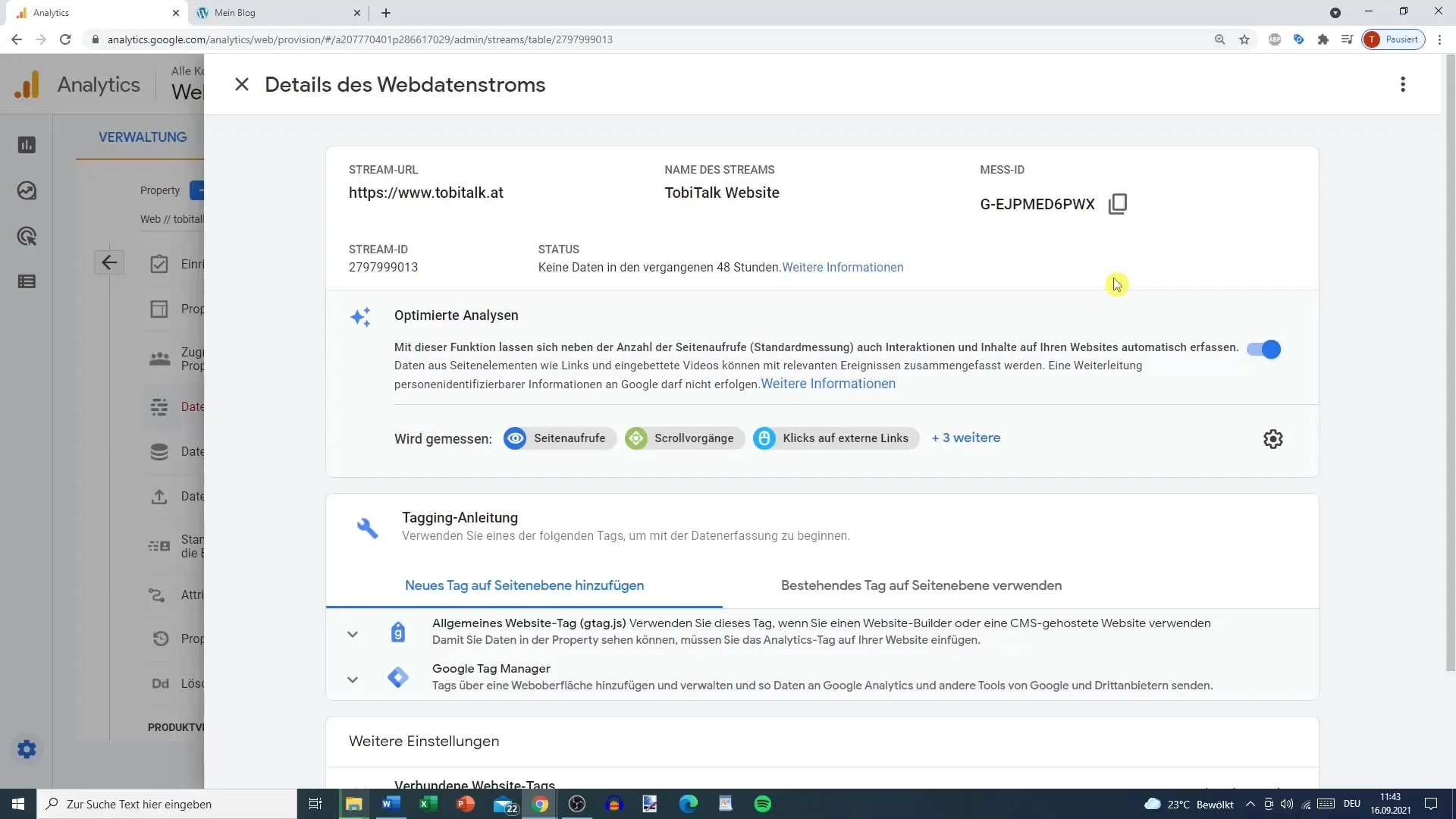
Step 8: Create Stream
Click on "Create stream" now to finalize it.
Step 9: Add Additional Data Streams
You can add additional data streams for more websites or apps at any time. Simply click on "Data streams" again and choose the option to add a new stream.
Step 10: Review Streams
If you have created multiple data streams, you can view them at any time. Each data stream is associated with a specific property, making data management easier.
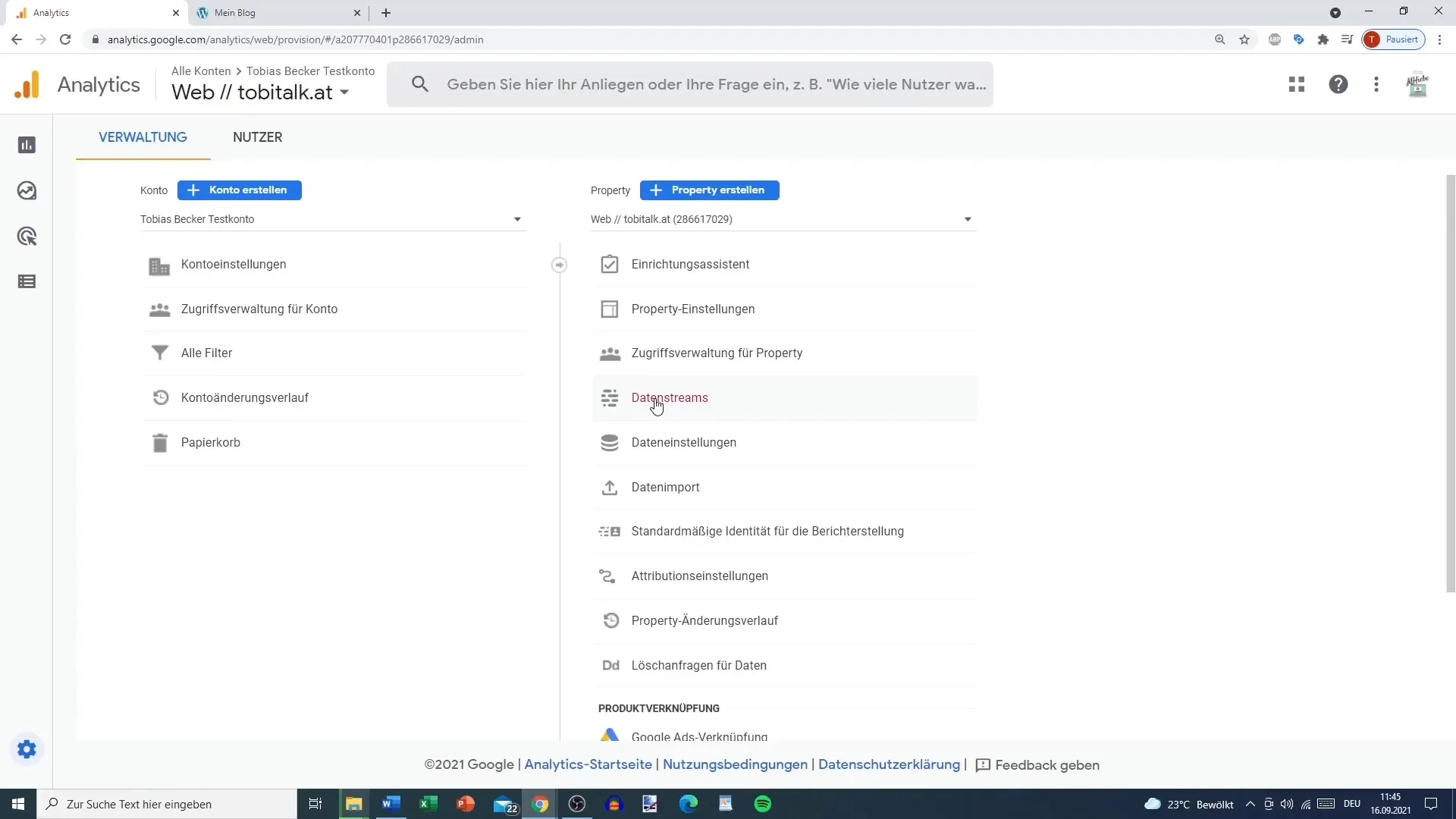
Summary
In this guide, you have learned how to create an initial data stream in Google Analytics 4. After setup, you can track various interactions on your portal and gain valuable data for your analyses.
Frequently Asked Questions
How many data streams can I create in Google Analytics 4?You can create multiple data streams for the same property, both for web and app data.
What is the difference between Google Analytics 4 and Universal Analytics?GA4 offers enhanced tracking features and allows simultaneous analysis of web and app data, whereas Universal Analytics primarily focused on website traffic.
Do I need to use Google Tag Manager to collect data?No, the optimized analysis of GA4 allows tracking without using the Google Tag Manager, but you can use it if you need advanced tracking capabilities.
Can I disable optimized analysis?Yes, you can disable the feature, but it is advisable to keep it active to gain more insights into user behavior.
